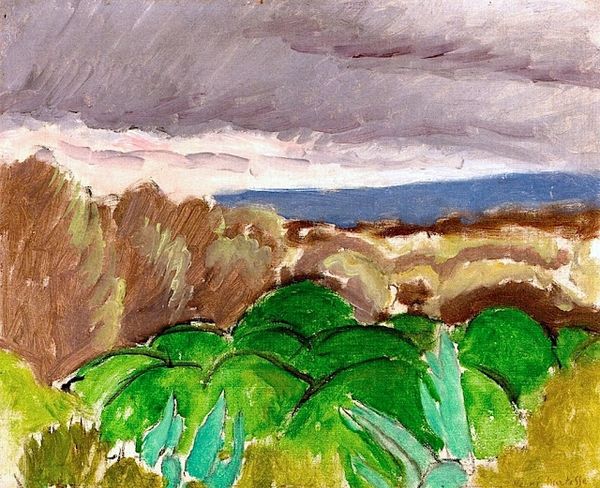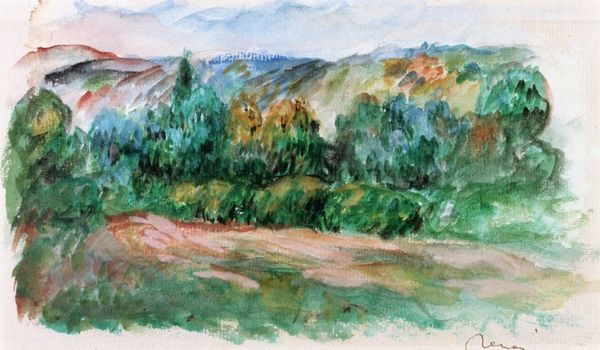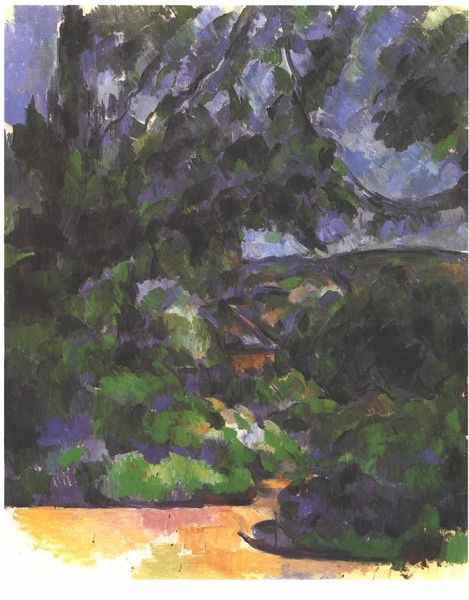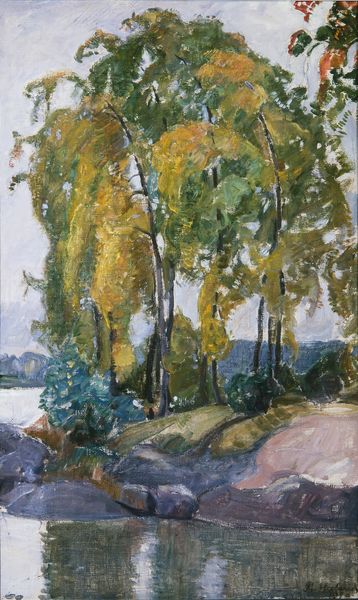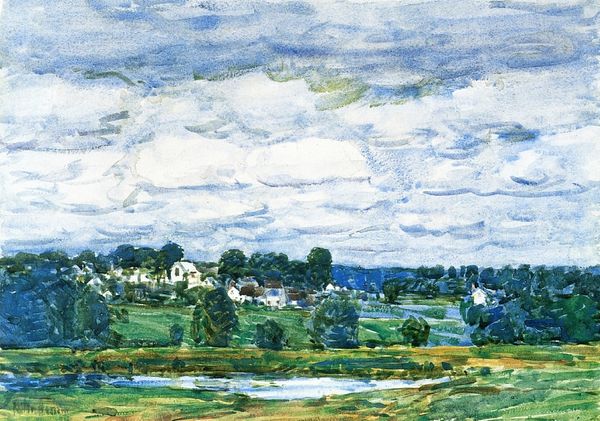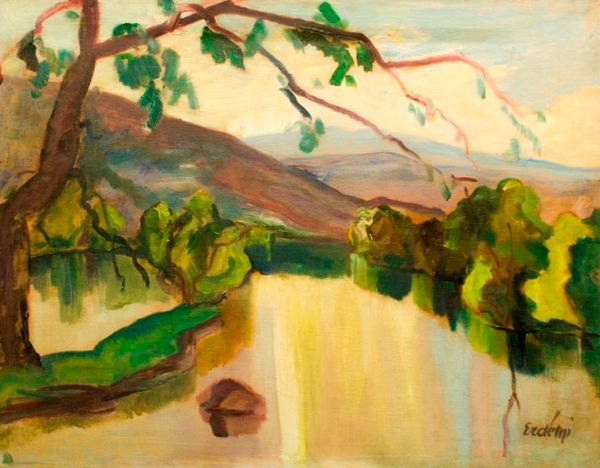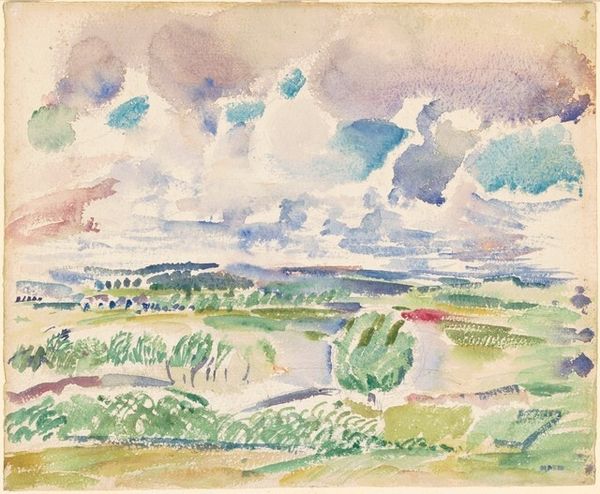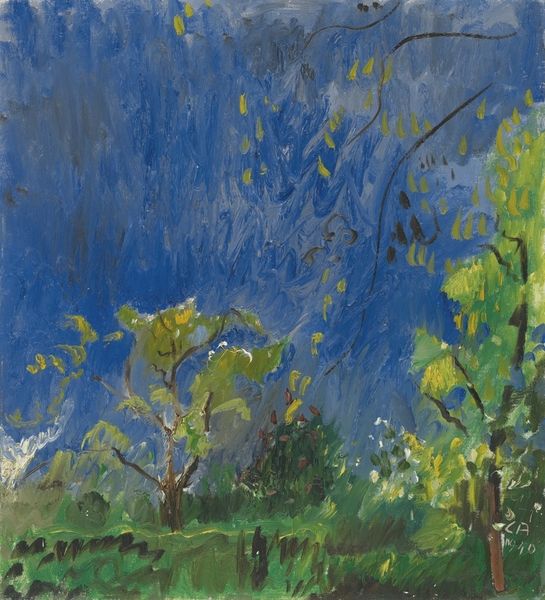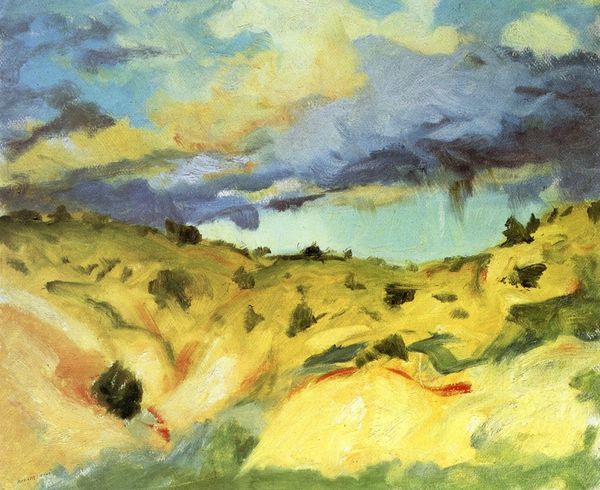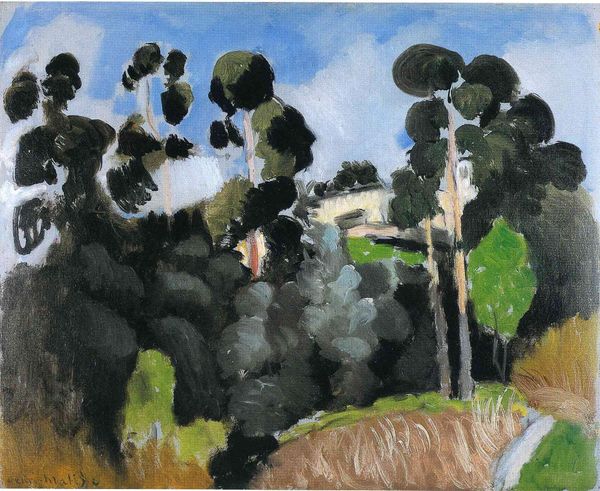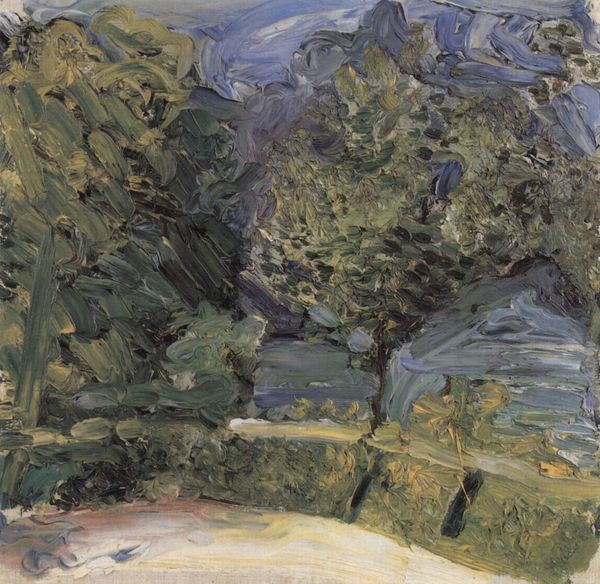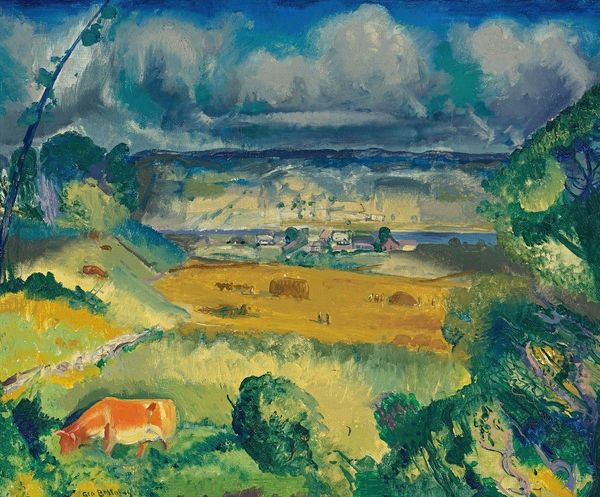
Copyright: Public domain US
Curator: Looking at this painting, titled "Chalais Meudon" by Henri Matisse, from 1917, one can't help but be struck by its loose brushwork. The color palette feels both vibrant and restrained. What’s your immediate take? Editor: There's a dynamism here that captures the atmosphere. The landscape almost vibrates with the texture of the paint, those rapid strokes, yet, it's oddly tranquil. The earth is raw, but the sky almost feels celestial. It presents us with nature captured through its basic elements. Curator: Matisse’s process reveals a tension reflective of wartime anxiety in France. He distanced himself from Paris. This painting shows us that the Fauvist use of color transitioned towards something quieter, maybe even contemplative because materials were more challenging to get during wartime. The painting marks a distinct departure from his pre-war hedonism as well. Editor: Absolutely, there's a material scarcity present—a kind of starkness compared to the lavish works before. Yet, if we focus on the form and color relationships, we see the foundation of what would become hallmark Matisse. It is a move from wilder, saturated colors into a new restrained composition. See how he controls the space with line, dividing sections, but blending similar tonal palettes to create depth. Curator: And let’s also notice that even this calming down, so to speak, remained a commercial calculation. Landscapes like this found a ready market amidst wartime sentiment. One has to consider the socioeconomic conditions and their influence. The pastoral ideal was often called upon at a time of crisis. Editor: Granted, that makes the image richer! But regardless, the simplified forms suggest this as part of a language – these flattened planes, the juxtaposition of colors. You look beyond what you're seeing because, truly, the arrangement carries all of the weight in communication and evokes a very grounded presence despite it being simple at its base. Curator: Precisely. In many ways, this piece represents that moment. A time of struggle interpreted, produced, and marketed into a quiet corner of the art world. Editor: Right, I’m seeing not just an echo but the makings of something innovative about to fully burst through; those compositional echoes are speaking quietly about that future.
Comments
No comments
Be the first to comment and join the conversation on the ultimate creative platform.
